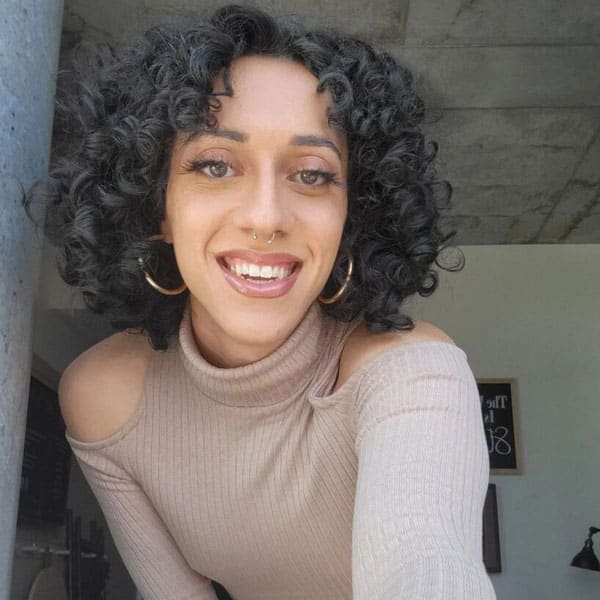Nereyda Luna On Anti-trans Bills and Radical Imagination
“It is possible to achieve a world where queer and trans youth are humanized, and it is vital that we all fight for it.”
Close
“It is possible to achieve a world where queer and trans youth are humanized, and it is vital that we all fight for it.”

This year, more than 200 policies have been introduced across the United States that would legalize unequal, unfair treatment of queer and trans people. They are part of a concerted, national effort to hyper-marginalize, deplatform, and silence trans and gender nonconforming (TGNC) youth quite specifically, and their very existence severely impacts young people’s mental health. That includes young people here in New York. More queer and trans adults need to be aware of just how dire the situation is, and take action to support TGNC youth and those close to them.
It can be easy for adults to dismiss youth and their ability to be cognizant of what’s going on around them. This adds to the vulnerability they already possess due to their age and their transness or queerness, because they are rarely taken seriously or afforded autonomy. I previously worked with TGNC youth of color in Florida, helping them grow as community organizers and access much-needed resources. Even the youngest person I worked with, who was 14 years old, had an acute awareness of what was going on nationally and in their state. In 2021, as Florida was attempting to pass two pieces of legislation that directly targeted trans youth, social media pages and local activists brought these pieces of legislation to the forefront. Tapped in to these pages and activists, queer and trans youth saw their liberties being debated. In a few meetings, we dedicated time to process and discuss how we all felt about what was happening. Several youth described feeling hopeless, anxious, scared, and angry.
For young people here in New York, the experience can be similar. John Cho, Youth Prevention Manager at The Center, shares that the youth he works with “feel exhausted to constantly have to explain, educate, and to provide evidence for their existence when cisgender heterosexual folks are never questioned about their sexual orientation or gender because we exist in a gendered and heteronormative society, which can cause a sense of powerlessness.” Salem Joseph, Youth Leadership Developer at The Center, concurs. “Many of them feel it has created a certain sense of fear in exploring new places, that makes them limit their options. Some feel a great push to fight against these, but many are really drained, especially our youth of color who are also combating the racism they experience in their day-to-day lives as well.”
As Joseph notes, it is crucial to keep in mind that this onslaught of hostile state policies does not weigh on all TGNC young people equally. Youth of color bear a particularly heavy burden. TGNC youth of color already report higher rates of harassment and a lack of safety in schools, and are also disproportionately targeted by the criminal justice system. Many of the policies that have been proposed or passed this year would make schools even more unsafe, and would open up yet another way for them to be criminalized, just for being who they are. TGNC youth of color sit at the intersection of multiple marginalized identities, and experiencing the brunt of these bills can lead to them feeling even more hopeless. “This is particularly potent with Black, Indigenous, and Asian communities at this time who have to consistently organize to be recognized as needing explicit legal protection that does not involve the police,” says Joseph. “When adding a layer of transness to being from these communities, you find yourself also fighting your loved ones to validate your transness, and fighting the allies in the trans community to come and show solidarity during moments of hardship in relation to racialized violence.”
 While it is valuable to raise awareness of the injustices of this current world, envisioning and enacting change will bring us much closer to a future that we actually want. When I envision an autonomous, safe future for young TGNC people, I think about emancipating my imagination from the confines of what currently exists. A lot of my artistic work revolves around trying to do this, to create a radical imagination. Back in Florida, when I brought radical imagination into my work with youth, the worlds they hoped for were just places where they could feel tenderness, and have autonomy and safety. TGNC youth are just asking to be humanized.
While it is valuable to raise awareness of the injustices of this current world, envisioning and enacting change will bring us much closer to a future that we actually want. When I envision an autonomous, safe future for young TGNC people, I think about emancipating my imagination from the confines of what currently exists. A lot of my artistic work revolves around trying to do this, to create a radical imagination. Back in Florida, when I brought radical imagination into my work with youth, the worlds they hoped for were just places where they could feel tenderness, and have autonomy and safety. TGNC youth are just asking to be humanized.
This does not have to be a radical concept. It is possible to achieve a world where queer and trans youth are humanized, and it is vital that we all fight for it. My colleagues at The Center offer some starting points to inspire individual action. Cho says, “The more important question is not whether trans and non-binary youth of color are experiencing these various sources of oppressions, but what we can do to continuously resist and challenge the people and systems that place our youth at risk?” and Joseph asks, “How are you showing up in solidarity and as accomplices to liberating trans youth of color?”